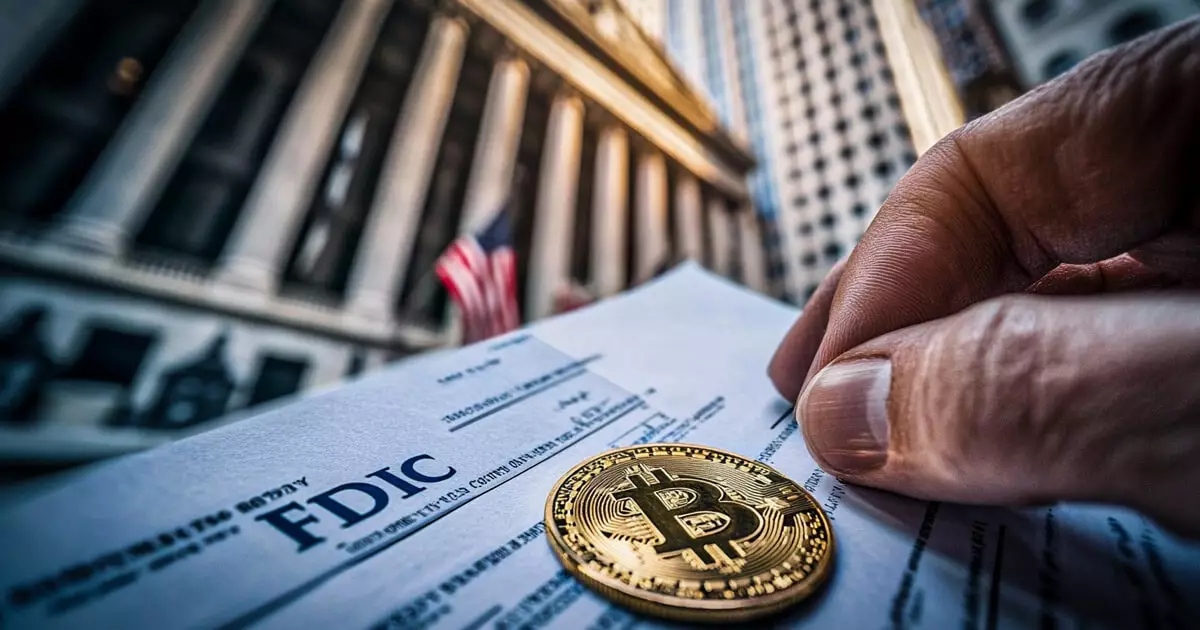The Federal Deposit Insurance Corporation (FDIC) has recently made waves in the financial sector by announcing a significant policy shift on March 28, allowing banks under its supervision to engage in cryptocurrency activities without prior explicit approval from the agency. This bold move not only rescinds previous guidance but also signifies a transformative approach to regulatory mechanics. In these turbulent times for financial innovation, such proactive actions can herald either opportunity or further complication, depending on how they are executed. It is crucial to understand the potential implications this shift could have, as well as its underlying motivations.
Unpacking Travis Hill’s Vision
Acting Chairman Travis Hill has expressed a determination to reflect on past shortcomings, particularly criticizing what he termed “the flawed approach of the past three years.” His candid acknowledgment of past errors indicates a much-needed pivot in institutional transparency and strategy. Hill refers to this realignment as a foundational step in re-establishing trust, not just within the FDIC but also in the broader financial ecosystem grappling with the integration of digital assets. By stating that he expects further guidance and clarity for banks, Hill positions the FDIC as a potential industry leader rather than merely a regulatory hurdle.
However, one cannot help but wonder: Is this newfound enthusiasm for innovation genuine or merely a response to external pressures? As the cryptocurrency community has often argued, prior restrictive measures—dubbed “Operation Chokepoint 2.0”—reveal systemic hesitance from regulators that stifled growth and development. Hill’s comments hint at an obligation to restore the credibility of the FDIC, and how successfully that is executed will ultimately determine the trajectory of financial innovation in the U.S.
The Ripple Effect: Collaboration with Other Regulatory Bodies
In addition to the FDIC’s internal reevaluation, the agency’s commitment to collaborate with the President’s Working Group on Financial Markets underscores a newfound urgency to provide clearer pathways for crypto integration. This collaboration, coupled with an exciting suggestion of a roadmap for lawful cryptocurrency operations, highlights the need for inter-agency communication amidst a complex regulatory landscape. The stakes are remarkably high.
As digital assets gain traction in public and private sectors, the urgency for coherent policies cannot be overstated. The catchphrase “a huge step forward toward innovation and adoption,” articulated by Bo Hines, the Executive Director of the Presidential Working Group on Digital Assets Markets, encapsulates the aspirations riding on these policy reforms. However, the crux of this collaboration lies in whether the resulting frameworks will genuinely support innovation or simply add another layer of bureaucracy to an already convoluted space.
Addressing the Challenges Ahead
Despite this optimistic tone, the journey ahead is fraught with challenges. Cranializing compliance concerns, particularly regarding the Bank Secrecy Act (BSA), draws attention to the potential pitfalls of maintaining security without stifling opportunities. Hill’s call for reconsideration of how the BSA is applied reflects an understanding that compliance demands can often serve as a pretext for restricting access to banking services. This central tension creates an environment that could either hinder or catalyze the growth of the digital asset sector.
The FDIC’s move to allow banks to pursue innovative offerings like tokenized deposits without unnecessary regulatory delays reflects a determined attempt to reconcile innovation with security. However, observers must remain cautious. Therees a delicate balance between sound oversight and an overreaching stifling of creativity. Clear pathways for innovation are essential, but over-regulating risk could deter institutional players from entering the market entirely.
A Future Within Reach but Still Uncertain
The FDIC’s recent announcements illustrate a critical moment in the dialogue surrounding cryptocurrency and blockchain technology within the U.S. financial ecosystem. The positive sentiment among industry participants is palpable; the momentum is shifting towards a more inviting atmosphere for digital assets. However, it remains to be seen whether this policy shift will materialize into enduring frameworks that genuinely promote innovation and trust or whether it will be remembered merely as a momentary blip in the drawn-out struggle for regulatory clarity.
As we stand at the crossroads of traditional finance and emerging technologies, the collective embrace of digital assets by regulatory bodies can herald a new era. Yet, there is still a nagging skepticism deeply ingrained in the financial sector. Whether this skepticism is dispelled through tangible progress or solidified by future missteps will largely depend on how the FDIC and other agencies navigate these uncharted waters going forward.

